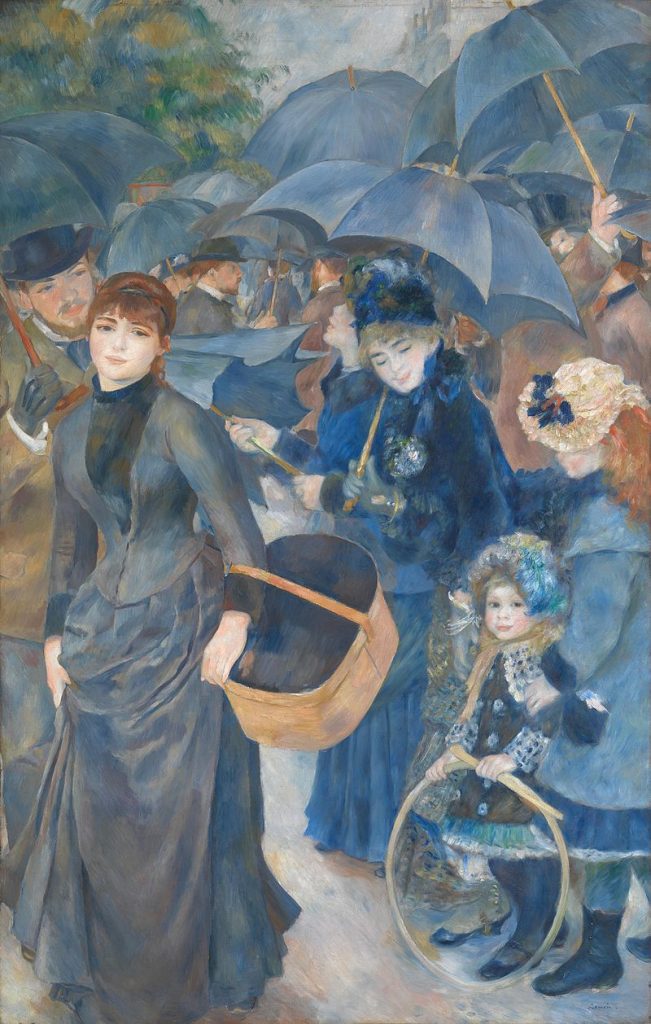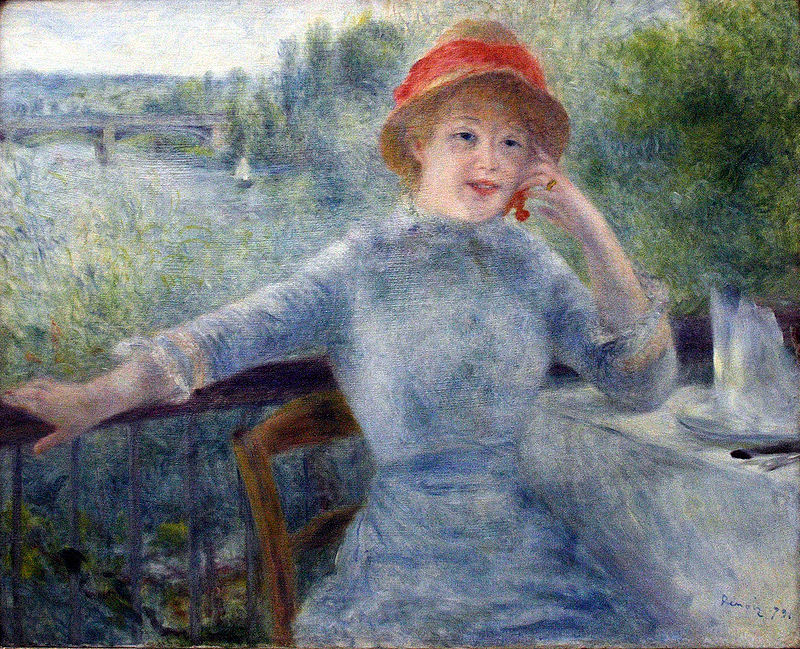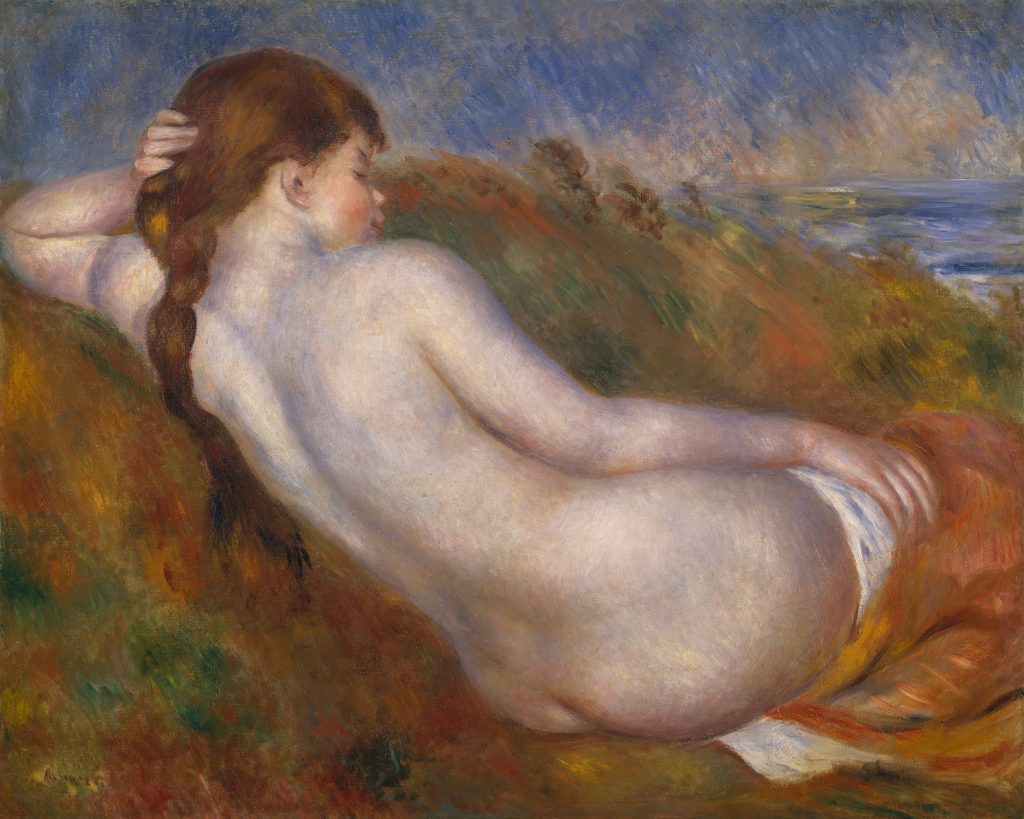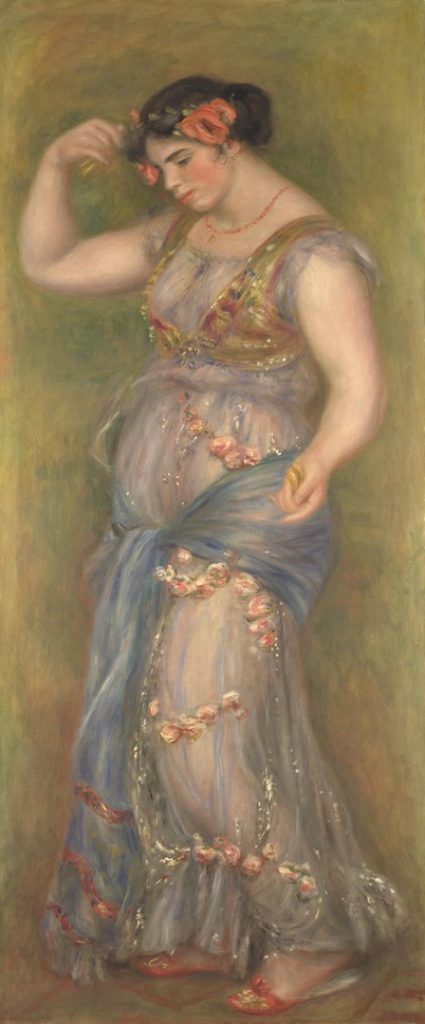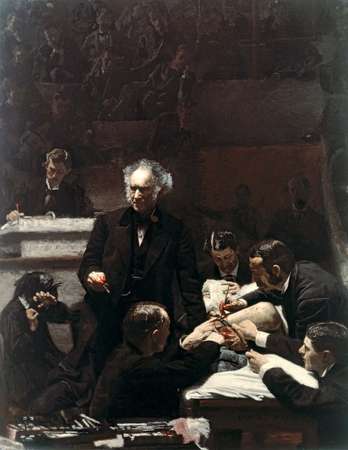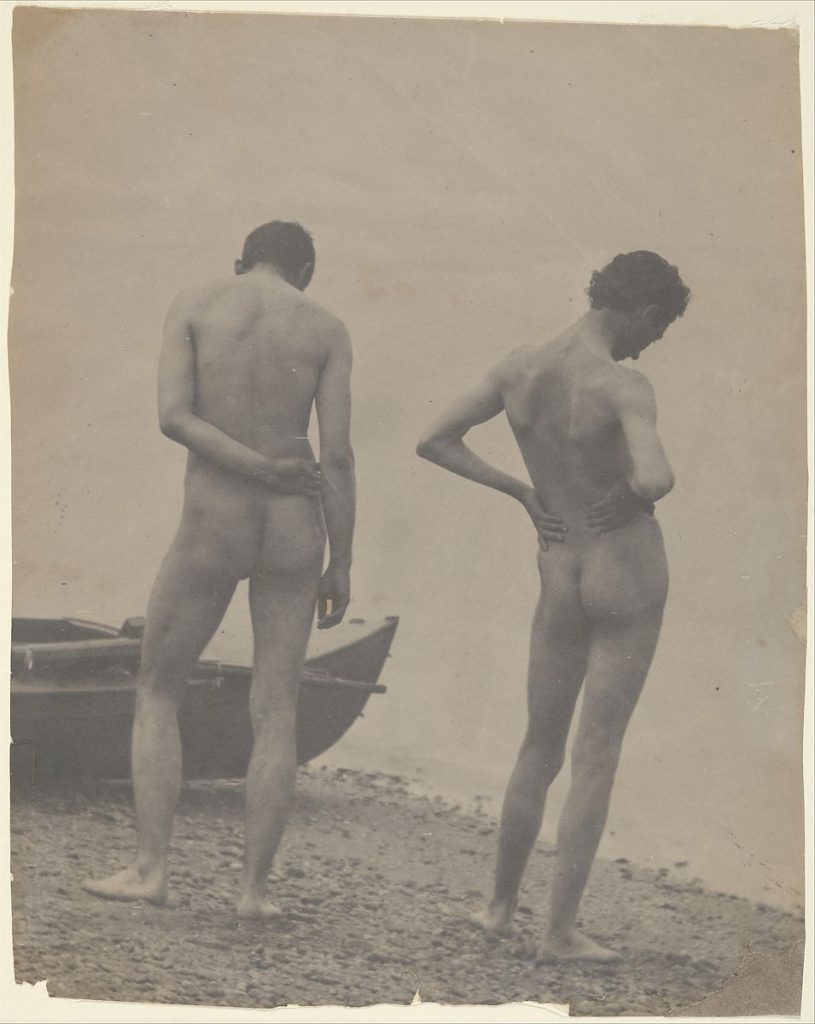I am the designer for this week. I am planning to look into the causes of WWI and making an artifact of either a battleship or specific battle scene.
Survey 6: Impressionism and Post Impressionism – Pierre-Auguste Renoir (1841 – 1919)
Pierre-Auguste Renoir was born February 25th, 1841 in Limoges, France. He attended the École des Beaux-Arts and at the studio of Charles Gleyre in 1862. Using these traditional classes as a foundation, he began to experiment with his art after meeting peers that shared his discontent with traditional art. He painted in the forest of Fontainebleau with his peers Claude Monet, Frédéric Bazille, and Alfred Sisley, where they developed their impressionist style. Inspired by the works of Gustave Courbet, Renoir worked on his most notable works, which were portraits and nudes of women. Alongside Monet in 1874, he created an independent artist’s society called The Impressionists, where those rejected by the Salon could exhibit their work. Although, in 1878 Renoir decided that Impressionism was not permanent like the works of old masters, and he left the exhibition to develop his work. This caused his figures to become more distinct, while the background kept its impressionist style.
In his earlier years, Renoir’s portraits seem to have very striking eyes. He gives the pupil and iris a very bold colour compared to the rest of his piece which is softer and more blended. It is interesting that following his study of old masters that his portraits no longer seem to face the viewer with their bold eyes, and their faces are less flat than they previously were. For example, The figures in The Umbrellas compared to the figure in the Dancing Girl with Castanets have much flatter faces and expressions but their eyes immediately catch your attention.
Sources:
Rise of Colour: Alphonse Mucha’s Art Nouveau Posters (1895 – 1905)

Colour printing in the late 19th century was cheaper and easier to mass-produce. This meant that the use of colour in advertisements was suddenly much more common throughout the industry, and in turn it allowed artists and designers to utilize colour more thoughtfully in their work. Combined with a desire to bring art away from the exhibitons and into daily life, bold and colourful designs began to surface in the Art Nouveau movement.
WHO WAS ALPHONSE MUCHA?
Alphonse Mucha was an Austrian designer born on July 24, 1860. He designed costumes, sets, and posters for theatre which allowed is unique approach to poster design to take Art Nouveau to the next level. His work was strongly influenced by Dante Gabriel Rossetti and his paintings which subjects were often women.
HOW WAS COLOUR USED?
The invention of chromolithography allowed designers to make their work colourful and attractive to the eye. Art Nouveau used many colours found in nature because the common motifs used in the style were flowers, organic patterns, and women. The most commonly used colours were mustard yellow, dark red, olive, pink, and brown, and the warm colours created an approachable and idyllic appearance for consumers to want to buy a company’s products. The outlines of the art were often done in brown rather than a harsh black. Light shades of blue and green were often used in the background to contrast with the female figure in the foreground.
HOW DID MUCHA DIFFER FROM OTHER DESIGNERS AT THE TIME?
While other designers used bold and eye catching colours, Mucha stood out from the rest by using pastel colours instead. His work was also heavily influenced by Japanese prints, he copied the long vertical scroll formatting for many of his posters. His work is also timeless, the posters are still admired above others because of his unique pastel and idyllic designs.
Sources:
- https://www.telegraph.co.uk/culture/art/11506307/The-grand-designs-of-Alphonse-Mucha.html
- https://pixel77.com/art-history-modern-design-art-nouveau/
- http://www.visual-arts-cork.com/famous-artists/alphonse-mucha.htm
- https://www.britannica.com/biography/Alphonse-Mucha
- https://www.artsy.net/article/artsy-editorial-alphonse-muchas-iconic-posters-define-art-nouveau
- https://www.prepressure.com/printing/history/1850-1899
- https://en.wikipedia.org/wiki/Art_Nouveau#Posters_and_graphic_art
Survey 5: Realism, Pre-Impressionism, and Pre-Raphaelites – Thomas Eakins (1844 – 1916)
Thomas Eakins was born on July 25th, 1844 in Philadelphia, Pennsylvania U.S.A. He attended the Pennsylvania Academy of Fine Arts, and anatomy lectures at the Jefferson Medical College. He painted dissections, and even participated in them. In 1866, he attended the École des Beaux-Arts in France, where he studied with Jean-Léon Gérôme. He was influenced by the works of Diego Velázquez and José de Ribera and they piqued his interest in oil painting. The subjects of his paintings were usually of his family and his daily activities, including fishing and rowing. In 1879, he began to teach at the Pennsylvania Academy of Fine Arts, and was adamant about using live nude models for practicing anatomy, saying that the relation between artist and model was as professional and objective as between a doctor and patient. This view was not supported by everyone, and he was forced to resign in 1886.
Eakins had a strong interest in human anatomy throughout all of his career, and his views of the human body are obviously influenced by the way medical procedures in the amphitheatre were conducted. It is impressive that the subjects of his work ranges from the unique surgical demonstrations of the time to more humble and modest paintings of his daily interests. Not only are his subjects broad, but his use of media is as well. He made paintings, sculptures, and even experimented with photography.
Sources:
Survey 5- Typography Zine (1850 – 1890)
I am a designer for the typography zine this week, and I plan to cover the modern posters and illustrated typography of the era. I am going to look into Jules Cheret, Henri de Toulouse-Lautrec, and Theophile Alexandre Steinlen. I might also include some of William Morris’s revived typefaces and the new typefaces that he designed.

